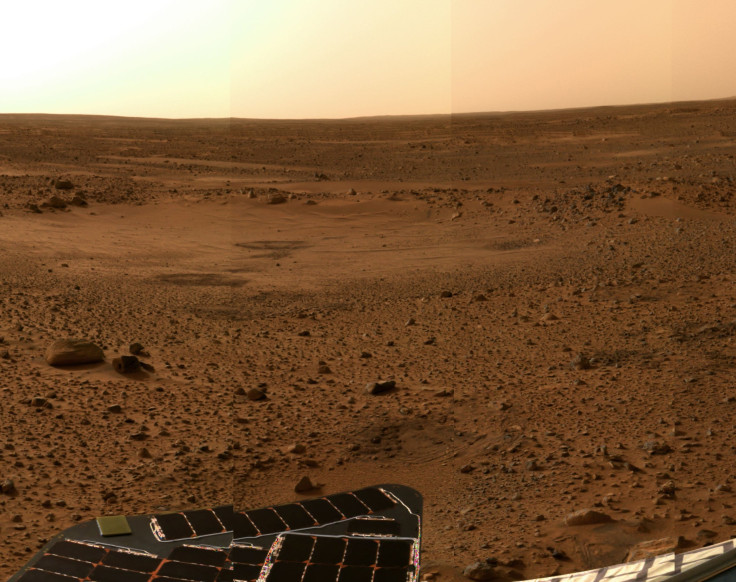Oxygen Once Flowed Freely On Mars, NASA Rover Discovers As Search For Water Continues

As Americans and the world prepare to send manned missions to Mars this century, scientists are glimpsing tantalizing clues about the possibility of past and present life on our closest solar neighbor, the Red Planet.
Mars has captured our imagination since the ancient astronomers — Egyptian and then Chinese in the 2nd millennium BCE, Babylonian, Greek, and Hellenistic, Indian and Islamic, too — first observed the glowing red orb in the night sky, estimating the distance and modeling its orbital arc, first circular and then elliptical.
Today, scientists are able to compare the petrology of material from meteorites on earth to rocks collected by NASA's Spirit rover, which operated for six years after landing in January 2004. By comparing samples collected by the rover, researchers from Oxford University say the planet's atmosphere was suffused with oxygen some 4 billion years ago. In the journal Nature, the researchers reported that surface rocks from the Gusev crater on Mars contained five times as much nickel as meteorites that fell to Earth, a composition that initially puzzled experts who wondered whether the meteorites were typical of volcanic material from the red planet.
"What we have shown is that both meteorites and surface volcanic rocks are consistent with similar origins in the deep interior of Mars but that the surface rocks come from a more oxygen-rich environment, probably caused by recycling of oxygen-rich materials into the interior," Bernard Wood, who led the study, told reporters. "This result is surprising because while the meteorites are geologically 'young', around 180 million to 1400 million years old, the Spirit rover was analyzing a very old part of Mars, more than 3700 million years old."
Although geological composition varies greatly by region on the planet, researchers think the difference more likely derives from subduction, a process by which material is recycled into the interior of the planetary body. In that scenario, the planet's surface was oxidized billions of years ago as oxygen-rich material was drawn into the shallow interior and recycled back to the surface during eruptions four billion years ago. By contrast, the meteorites comprise material from much younger volcanic rocks that emerged from deeper within the planet.
"The implication is that Mars had an oxygen-rich atmosphere at a time, about 4,000 million years ago, well before the rise of atmospheric oxygen on earth around 2,500 million years ago," Wood said. "As oxidation is what gives Mars its distinctive color, it is likely that the red planet was wet, warm and rusty billions of years before Earth's atmosphere became oxygen rich."
The news of Mar's oxygenic past comes as NASA's plans to "follow the water" — via robotic rover — before sending an eventual manned mission to Mars. On Monday, the U.S. space agency announced its 21st astronaut class, including four men and four women, all in their mid- to late-thirties. "I truly don't remember ever wanting to be something else," Anne McClain, 34, a U.S. Army major, told reporters.
McClain and her class began a two-year training program in August, as NASA continues development on its next-generation space vehicle.
Prior to any manned mission to the planet, however, investigators will continue to dowse for water by rover, seeking greater evidence that a vast ocean once flowed in the northern hemisphere — and searching for that Martian fountain of youth, an ancient reserve of water that may lie somewhere beneath the surface.
Source: Wood B. Mars Had Oxygen-Rich Atmosphere 4,000M Years Ago. Nature. 2013.



























